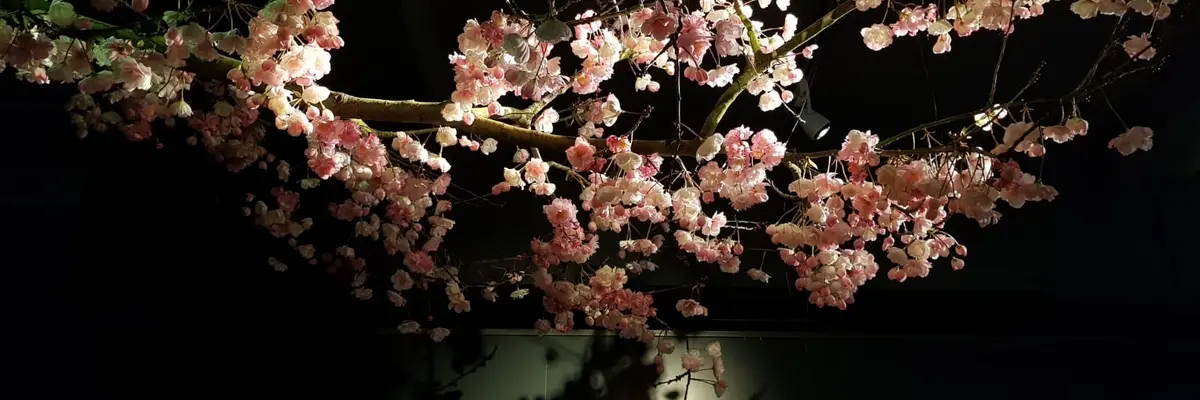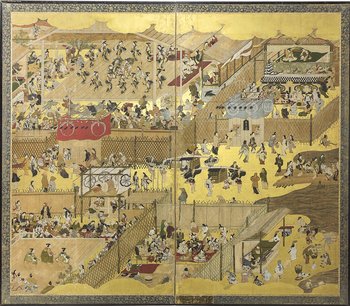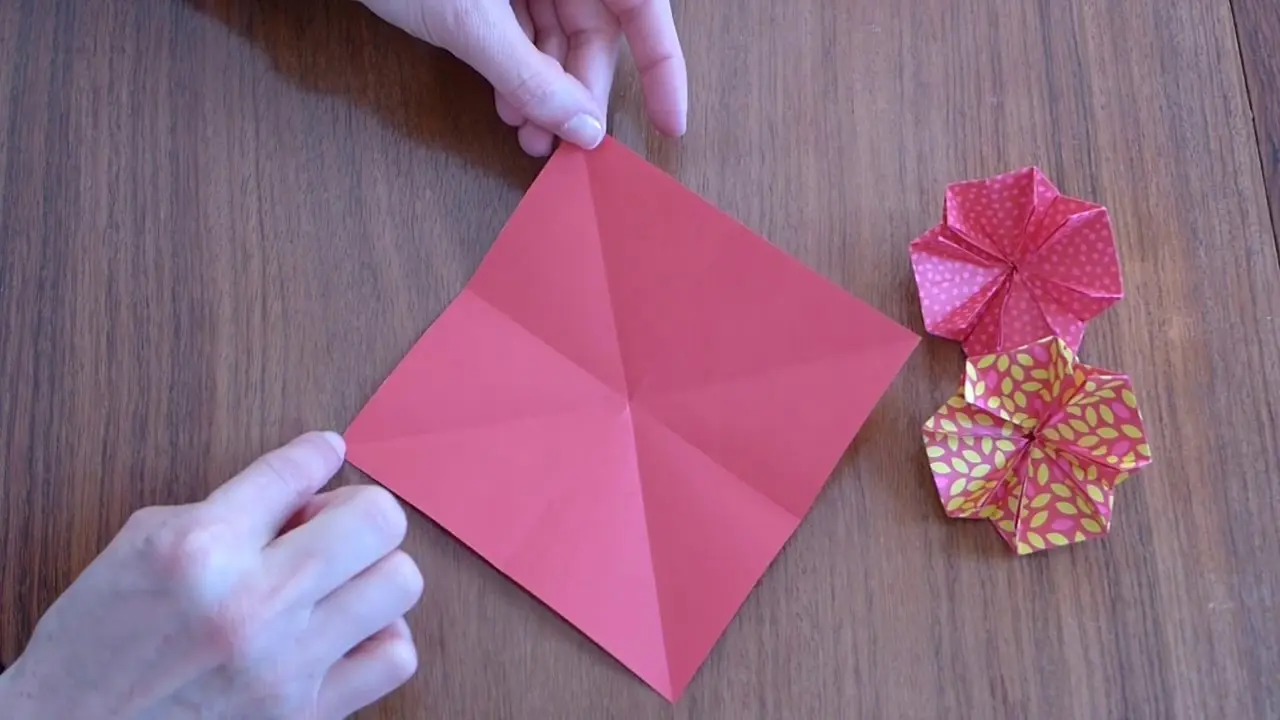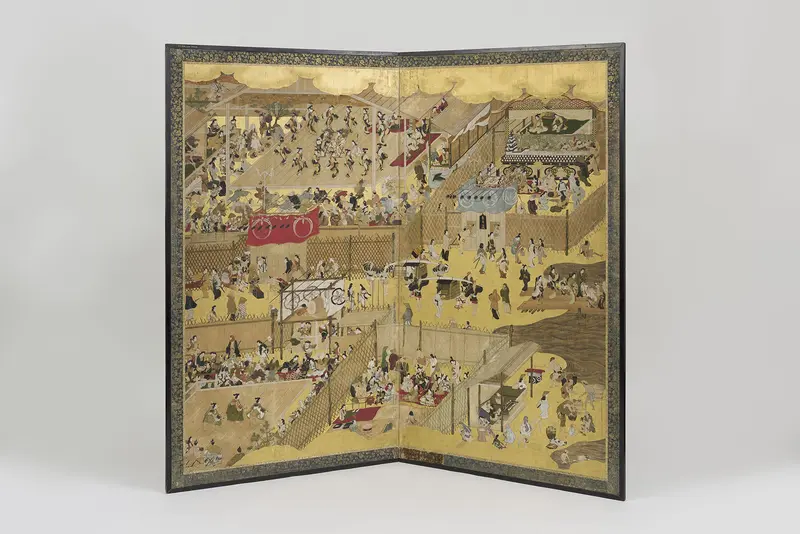[Translate to English:] text
Japan, early 17th century. Life is throbbing on Shijō-Street in Kyoto. A porter is hurrying through the passage in between theatre stages, people are sharing picknicks, other watch the dancer with their fans, a woman is making small rice pies at her stall near the river. These miniature scenes of theatre pleasures and daily business are displayed on an object, indeed very special, held in the Japan-collection ar GRASSI Museum für Völkerkunde at Leipzig: it is a so-called byōbu – a bi-winged screen, which was taken to the museum in 1891. Recently it was restored and will be visible in a special exhibition starting in April 2020.
The screen is in fact a hidden object game, allowing us to glimpse into Japan of the early Edo period (1603 – 1868). Clothes, haircuts, musical instruments and every day objects are displayed realistically, and the way the figures interact or pass by each other vividly tells us about society in the then capital city of the Japanese empire.
In Western perception such screens are among those objects that are associated as „typically Japanese“ since the somewhat nostalgic enthusiasm for Japan in the late 19th century – the so-called japonism. It is an object which is one the hand used as furniture, on the other serves as a picture portraying social status, handicraft and style of home furnishing. In this way it equally disclosed and hides something.
The Leipzig byōbu was purchased by Heinrich Botho Scheube (1853-1923) during his employment as doctor in Kyoto from 1877-1882. On his return to Germany he gave it to the museum in Leipzig, accompanied by a range of other objects he had collected. In the context of this collection, our exhibition intends to ask for then common images of Japan. Did Scheube have an interest in Japan than most of the stereotypical European perspectives of that time? How can we mediate from these „Scenes of Life“ expressing urban civic culture on the screen to the material culture handed down through the centuries?
Possible explanations will be discussed by help of several themed sections as well as historic photographies. Objects of collection, such as a »bentō box«, a drum, a fan, or a pair of sandals, give the opportunity to compare the real object and their artistic realisation on the screen. At the same time they show the diversity of the Leipzig collection.
Souvenir photography had a huge impact on images of Japan in Europe of the late 19th century. Western photographers often took these rather imaginary portraits of Japan for travelers. Mostly staged in studios they focus on topics that, from a European point of view, emphasised the special and „Other“ part of Japanese culture. In this, screens played a major role as requisites: They served as backgrounds for mostly young women to re-enact „Japanese“ life by needleworking, dancing or doing each other‘s hair.
In contrast the Leipzig byōbu was fabricated by local artists and must have belonged to Japanese household for over three centuies, before being purchased by Scheube.
With these historic perspectives in the „Own“ and the „Other“ in mind, we face the question of how we contemporarily perceive Japan. What do we know about this country and in how far do certain clichés survive?
The exhibition does not only attempt to give an insight into the art and cultural historic dimension of the screen, which originally ought to have had a bi-winged counterpart. We also show aspects relating to material and craftmanship of the restoration process which took place in close collaboration with Tokyo National Research Institute for Cultural Properties (Tobunken). Transcultural dimensions of projects like these are central issues when considering the ethics of restoration in an anthropological museum of the 21st century.
The exhibition is under patronage of Uwe Albrecht, Leipzig mayor and councillor for economy, employment and digital affairs.





